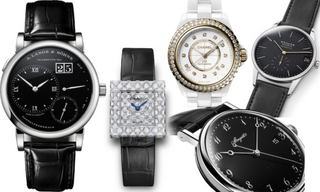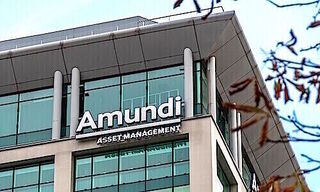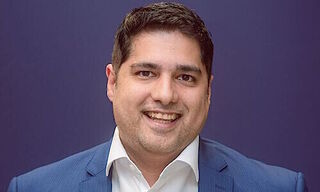Goldman Sachs takes a very subtle approach when managing the art preferences of clients. After all, paintings and sculptures are not always suitable as a stand-alone asset class, Monica Heslington explains in an interview with finews.art.
Ms. Heslington, what is your job at Goldman Sachs?
I lead the Family Office Art & Collectibles Strategy practice within Goldman Sachs Private Wealth Management, providing our clients with a service that goes beyond our traditional investment management offering.
What does that mean?
We support clients with their art collections, providing them with objective and independent guidance on everything from acquisitions, sales and collection management, to structuring, philanthropy, succession planning, and art lending.
Does Goldman Sachs do anything differently from other banks when it comes to advising on art and collections?
We do not treat art and collectibles like a financial product, as we recognize that for many, collecting is still primarily an individualized expression of their personal interests, passions, and an appreciation of history and culture.
«We are trying to figure out why our clients want to start collecting art.»
We also offer our clients a holistic service that goes beyond the traditional definition of art and covers all types of collectibles, from antique furniture and rare books to jewelry, musical instruments, and wine.
Can you explain this approach in more detail?
We don't limit ourselves to questions of potential appreciation and future resale value. We determine why our clients want to start collecting and how it fits into their identity and lifestyle. Do they want to create their own museum, surround themselves with art that inspires them, support young artists and the art ecosystem, promote culture, or preserve history? Based on their unique goals and profiles, we help them formulate a bespoke strategy.
This can include providing them with education on how the art market works, best practices, how to figure out their own tastes, and pitfalls that should be avoided. We make referrals to experienced art advisors and other art world professionals who are best suited to assist our clients with their specific needs. We also bring estate planning professionals into the conversation.
What are the biggest challenges in advising art collectors?
There is no standard, off-the-shelf approach to collecting. Due to the emotional aspects of collecting art, each situation is different and requires tailoring our guidance accordingly. Clients are also very emotionally attached to their collections, so we need to be sensitive to the fact that financial efficiencies might not always be the top priority and need to be balanced with other personal considerations and preferences.
«A noticeable trend is the increasing number of older collectors»
The art market is very complicated and opaque and requires a high degree of expertise. It takes a lot of time to build and cultivate the right network of art advisors and other art professionals who can provide our clients with best-in-class guidance.
How have art and collection advisory services changed in recent years?
As banks have begun to embrace a more holistic approach to private wealth management, many clients now expect to have some type of art-related offering. We have responded with a strategic art practice that covers all of the aspects of collecting. In general, we have seen an increasing professionalization and specialization in art and collection advisory services. Instead of covering only acquisitions, sales and collections management, they now include topics such as philanthropy or succession and legacy planning.
Are there any sustainable trends that you have observed in recent years?
One noticeable trend is the growing number of established collectors who are thinking strategically about the long-term future of their collection, especially when their descendants have little or no interest in it. I also have observed an uptick in collectors who are deciding to sell their collections to fund philanthropy.
Geopolitical tensions, political and fiscal uncertainty around upcoming elections, and high interest rates have all left their mark on the art market. Experienced collectors are taking more time to make significant acquisitions and many are choosing to hold off on selling blue chip trophy pieces.
«At Goldman Sachs, we do not view art as a traditional investment category»
However, there is also a growing interest from younger collectors who identify more strongly with ultra-contemporary art, which is positively impacting certain artists in that segment of the market.
Should art be considered an investment class in its own right?
Our Investment Strategy Group does not include art or collectibles in any of our model asset allocation portfolios as it does not generate income, is less liquid than other investment assets, and the art market is less transparent and regulated than the financial markets.
Although we do not regard art as an investment category in the traditional sense, we do believe that art can be an investment in oneself, society and humanity, and that our clients can receive non-financial dividends from collecting and living with art. Art should be viewed as something to be enjoyed rather than speculated on.
Are American and European collectors different?
Yes, American collectors tend to use art advisors more often to help them determine what type of art they like, while European collectors tend to already know and follow their own tastes. Since European collectors often have a stronger art historical education, this gives them more confidence in which pieces to acquire without relying on an advisor.
Do you personally collect art?
I started out collecting abstract expressionism, but am now incorporating representational art by Middle Eastern artists. I find it fascinating how my taste has developed over time.
Monica Heslington heads the Family Office Art and Collectibles Strategy practice within Goldman Sachs Private Wealth Management. She began her career at Sotheby's in the 19th and 20th Century Sculpture and Arcade Paintings departments, followed by her role as Associate Director of Acquisitions & Auction Liaison at Spanierman Gallery. She also worked at an accounting firm as a tax supervisor. Heslington is a member of PAIAM (Professional Advisors to the International Art Market). She holds a Bachelor's degree in Art History from the American University of Paris, a law degree from the Benjamin N. Cardozo School of Law, and an LLM in Taxation from New York University School of Law.






















